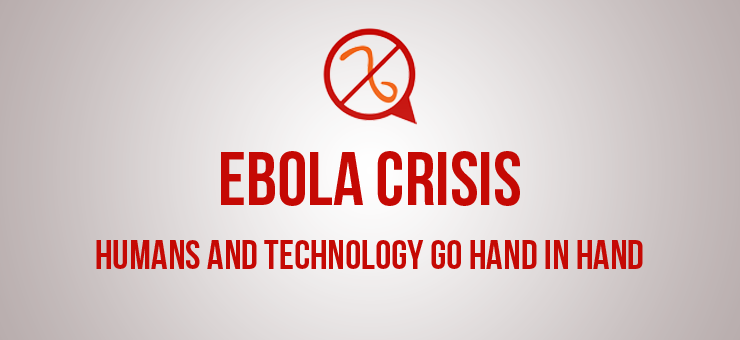Humans have always tried to create a better world around them. Technology is the logical result of human ingenuity and resourcefulness. As technology advances, the lines between humans and machines sometimes get blurred, and that sometimes has resulted in fatal mishaps. However, in true human spirit of surviving and evolving by learning from our mistakes, we can learn from such missteps. We can learn that although technology can assist and make it easier for human beings in performing better, in various facets of their lives, it cannot function like them.
What happened at the Dallas hospital is a harsh reminder of this lesson. The misdiagnosis and subsequent death of the Liberian man, Thomas Eric Duncan due to Ebola, has reminded us of the dire consequences of error in patient diagnosis, while highlighting the role of Electronic Health Record (EHR) in making the correct diagnosis.
To say that technology is to be entirely blamed for the unfortunate incident will be a misinterpretation of facts. The statement released by Texas Health Presbyterian Hospital pointed out communication lapse that resulted in the discharge of Duncan with Ebola symptoms. Whether this communication lapse was a human error or caused by mishandling of EHR, will be discussed in this blog.
Communication Failure
Communication is a two-way process, in which there is a sender and a receiver. Both ends have to ensure that the message has been communicated clearly. In case of Duncan’s first visit to the hospital, there was a communication gap due to which patient information was not shared between the nurse and ED physician.
The hospital released a statement saying, “there was no flaw in the electronic health record and the travel history was available to the doctors.” Based on the information available and the timeline given by the hospital, it appeared to be a case of human error on two levels. First of all, there were visible red flags that the nurse over looked; like the black man who traveled to Africa, had flu-like symptoms and fever. If the nurse was aware of Ebola Symptoms, then she should have recognized them right away and alerted the ED physician.
Secondly, the nurse was familiar with the hospital workflow, and the EHR they used to create clinical notes. Knowing that her notes were not shared with the ED physician, she should not have relied on the system for communication of patient data.
Failure to use EHR in a meaningful way
As the role that technology plays in our daily lives has increased, so has our dependency on it. We expect it to perform like a human and give us remarkable results. In the case of Eric Duncan, the nurse and physician relied on EHR to make the right diagnosis for the patient.
This is not the first case of misdiagnosis in the country. The Journal of the American Medical Association (JAMA) published a survey in 2012 that reported, “Cases of delayed, missed, and incorrect diagnosis are common, with incidents in the range of 10% to 20%.”
However, the ebola case attracted a lot of media attention because of EHR involvement in the misdiagnosis. To what degree should we hold technology responsible for a misdiagnosis, is the right question to ask?
Technology, no matter how sophisticated it is, can never replace human ability to think critically and make judgments. Even the most advanced EHR cannot make the decisions for the physician. Its job is to collect facts, maintain data, bring efficiency in workflow and facilitate diagnostic decisions.
EHRs are still evolving. Currently, they are in the phase where they can assist physicians and healthcare professionals in improving patient care. Perhaps there will be a time when we can expect EHR to make a judgment call based on the record entered.
Having the right EHR is essential for efficient workflow. Failure to implement a system that is compatible with the health facility’s workflow, only results in mismanagement and miscommunication – like in the case of Eric Duncan. A hospital requires an interoperable system that enables sharing of patient records between different departments. Contradictory information on nurse and ED physician notes (fever vs. no fever) resulted in misdiagnosis of the patient.
This could have been avoided, had the hospital implemented a system that offered sharing of patient data between the nurse and the physician. Having an EHR that does not meet the needs of the hospital or practice will create obstacles in the workflow. Although there was no flaw in the software, but it did not cater to the needs of the hospital.
The lesson that cannot be avoided
There should be an independent and transparent investigation into the misdiagnosis of Eric Duncan case, which should be made public. Based on the available information, it was evident that communication lapse occurred because of human error.
Surely, there is lot of urgency in an emergency department of a hospital, and the staff has more than their fair share of work to do. However, the physician could have asked the nurse questions about the patient’s vitals before making the diagnosis.
Therefore, healthcare professionals need to understand that technology can be incorporated to assist them in their workflow, but the clinical decisions have to be made by them.

Join the Discussion!